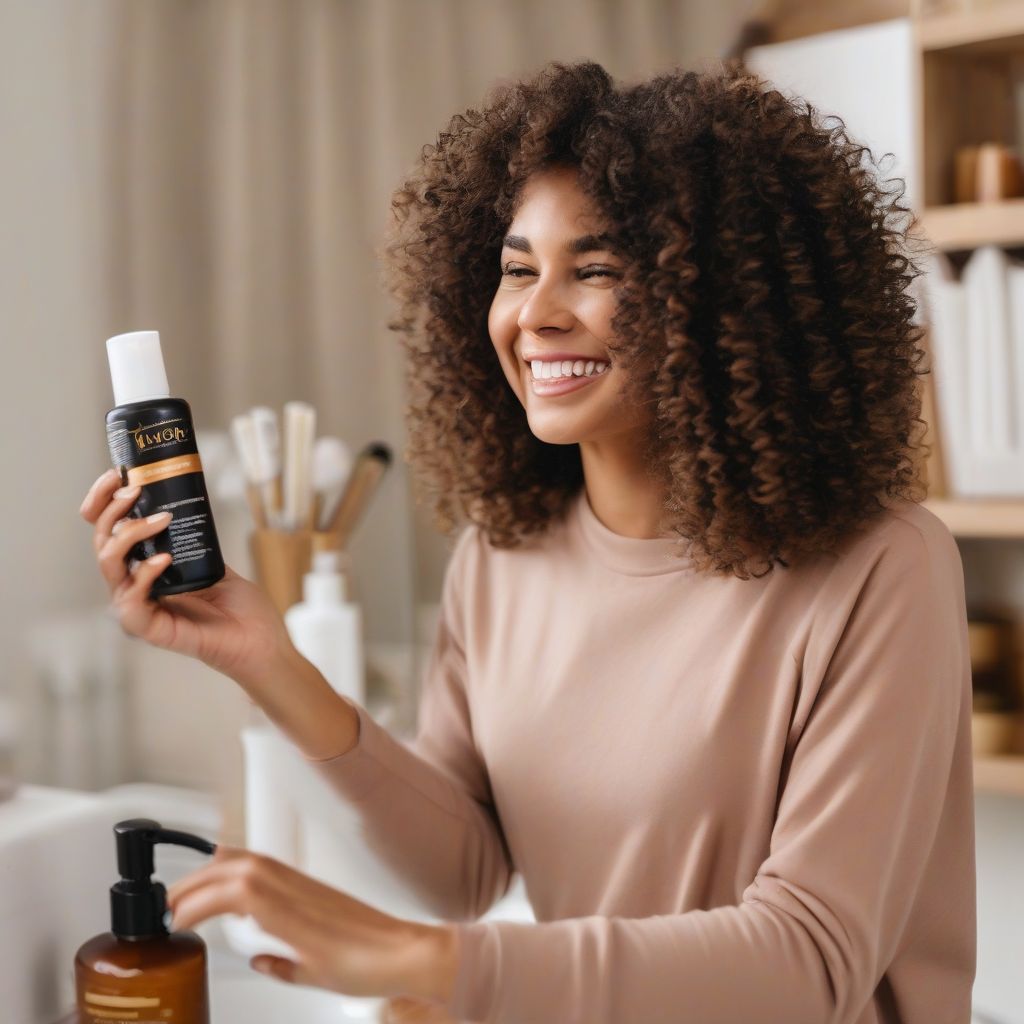Have you ever gazed enviously at someone with perfectly defined, bouncy curls, wishing your own hair could look half as good? You’re not alone! Managing curly hair can feel like navigating a maze of products and techniques. But what if I told you that achieving healthy, vibrant curls could be simpler than you think?
As a certified nutritionist and meal prep coach, I understand the power of a holistic approach. Just like nourishing your body from within yields the best results, so does caring for your curly hair. This guide is your roadmap to unlocking your best curls yet. We’ll delve into the science behind curly hair, debunk common myths, and provide you with practical, easy-to-follow hair care tips that fit seamlessly into your routine.
Understanding Your Unique Curl Pattern
The first step to effective curly hair care is understanding what makes your curls tick. Curly hair isn’t created equal. It varies significantly in shape, texture, and porosity.
Curl Type: Defining Your Curl Pattern
Hair experts have identified a classification system for different curl types, ranging from loose waves to tight coils:
- Type 2: Wavy Hair: Type 2 hair forms gentle “S” shapes and can range from barely-there waves to more defined ones.
- Type 3: Curly Hair: Type 3 curls are characterized by defined spiral or corkscrew shapes. They tend to be springy and can range from loose loops to tight ringlets.
- Type 4: Coily Hair: Type 4 hair has tight coils that form a “Z” pattern. These curls are often densely packed and can range from tightly coiled springs to a more zig-zag pattern.
Knowing your curl type helps you choose the right products and styling techniques for your specific needs.
Hair Porosity: How Well Your Hair Retains Moisture
Porosity refers to your hair’s ability to absorb and retain moisture. It plays a crucial role in how your hair reacts to products and styling.
- Low Porosity: Hair cuticles are tightly bound, making it difficult for moisture to penetrate. Products tend to sit on the hair rather than being absorbed.
- Medium Porosity: Hair cuticles are slightly raised, allowing for a good balance of moisture absorption and retention.
- High Porosity: Hair cuticles are more open, allowing moisture to enter and escape easily. Hair tends to be dry as it loses moisture quickly.
Understanding your hair’s porosity can guide you in choosing the right moisturizing and styling products to maintain optimal hydration.
The Golden Rules of Curly Hair Care
Now that you have a better grasp of your unique curl type and porosity, let’s dive into the fundamental principles of curly hair care:
1. Hydration is Key: Quench Your Curls’ Thirst
Curly hair is naturally drier than straight hair because the natural oils produced by your scalp have a harder time traveling down the twists and turns of the hair shaft. This is where regular moisturizing comes in.
- Deep Condition Regularly: Treat your curls to a weekly deep conditioning treatment. Look for products rich in humectants (ingredients that attract moisture) like glycerin or hyaluronic acid.
- Leave-in Conditioners Are Your Friend: After washing, apply a leave-in conditioner to provide ongoing hydration throughout the day.
- The LOC Method: This popular method involves layering products to seal in moisture. Start with a liquid (water or a water-based leave-in), followed by an oil (coconut oil, jojoba oil), and finish with a cream to lock it all in.
2. Gentle Cleansing: Ditch the Daily Shampoo
Traditional shampoos can strip your hair of its natural oils, leaving it dry and brittle. Opt for sulfate-free shampoos or consider co-washing.
- Sulfate-Free is the Way to Go: Sulfates are harsh cleansing agents that can dry out curly hair. Look for shampoos specifically formulated for curly or dry hair.
- Co-Washing: Cleansing with Conditioner: Co-washing involves washing your hair with a conditioner specially formulated for cleansing. It helps to gently remove dirt and product buildup without stripping away moisture.
3. Detangling with Care: Avoiding Breakage
Curly hair is prone to tangling, and aggressive brushing can lead to breakage. Follow these tips for stress-free detangling:
- Wide-Tooth Comb is a Must: Invest in a wide-tooth comb and use it to gently detangle your hair, starting from the ends and working your way up.
- Detangle on Wet Hair: Curly hair is most fragile when dry. Detangle your hair in the shower while it’s wet and saturated with conditioner.
- Finger Detangling: For some curl types, finger detangling can be gentler than using a comb.
4. Heat Styling in Moderation: Protect Your Curls
Excessive heat styling can damage curly hair, leading to dryness and breakage. Limit the use of heat styling tools and always use a heat protectant spray.
- Air Drying is Best: Whenever possible, let your curls air dry naturally. If you’re short on time, use a diffuser attachment on your blow dryer on a low heat setting.
- Heat Protectant is Non-Negotiable: If you must use heat styling tools, apply a heat protectant spray beforehand to create a barrier between your hair and the heat.
 Curly Hair Routine
Curly Hair Routine
Common Curly Hair Myths Debunked
The world of curly hair care is rife with myths that can sabotage your efforts. Let’s debunk some common misconceptions:
Myth 1: Curly hair is strong and resilient.
Reality: While curly hair may appear thick, it’s actually more fragile than straight hair and prone to breakage.
Myth 2: You shouldn’t cut curly hair often.
Reality: Regular trims help to prevent split ends, which can travel up the hair shaft and cause further breakage.
Myth 3: All oils are good for curly hair.
Reality: While some oils can be beneficial, others can clog pores on your scalp and hinder healthy hair growth. Choose lightweight oils like jojoba oil or argan oil.
Nourishing Your Curls from Within
Remember, healthy hair starts from within. Just like your body needs the right nutrients to thrive, so does your hair. A balanced diet rich in:
- Protein: Hair is made up of protein, so ensure you’re consuming enough from sources like lean meats, poultry, fish, beans, and lentils.
- Biotin: This B vitamin plays a vital role in hair growth. Include biotin-rich foods like eggs, nuts, and seeds in your diet.
- Iron: Iron deficiency can contribute to hair loss. Good sources of iron include red meat, spinach, and lentils.
By nourishing your body with the building blocks of healthy hair, you’ll support your hair care routine from the inside out.
Conclusion: Embrace Your Natural Texture
Navigating the world of curly hair care can seem daunting, but armed with the right knowledge and techniques, you can unlock the full potential of your curls. Remember that consistency is key. Experiment with different products and techniques to find what works best for your unique hair type. Most importantly, embrace your natural texture and enjoy the journey to healthy, vibrant curls.
Looking for more hair care tips and product recommendations? Check out our latest articles on DIY Hair Care Tips and Hair Care Product Reviews.
What are your go-to curly hair care tips? Share your experiences and advice in the comments below!
[amazon bestseller=”curly hair products”]
